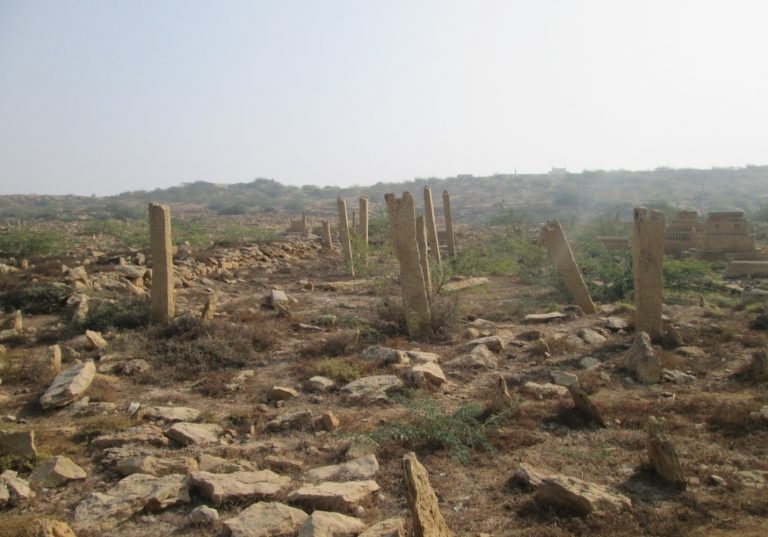
The graveyard needs a boundary wall, and a small museum should be established, providing information about the graveyard to visitors.
Quratulain Kareem
Sonda graveyard situated in Village Sonda at a distance of about 20-22 miles from Thatta along main national highway to Hyderabad was founded, according to Mir Ali Shair Qane author of Tuhfat-ul-Karam, by Jam Tamachi in 3rd quarter of fourteenth century A.D. The Samma ruler Jam Tamachi was revered by the Muslims of the area due to the noble family of saints, the Makhdums. It is here in this graveyard that the saintly personages are buried. Most of the yellowish stone tombs were once embellished with Quranic verses, floral and geometrical patterns and human representations; however, little has survived of these splendid graves. Further, it is said that there lived a saint before the town was founded. The saint was very fond of Rag Sondra and the village derives its origin from the name of this Rag.
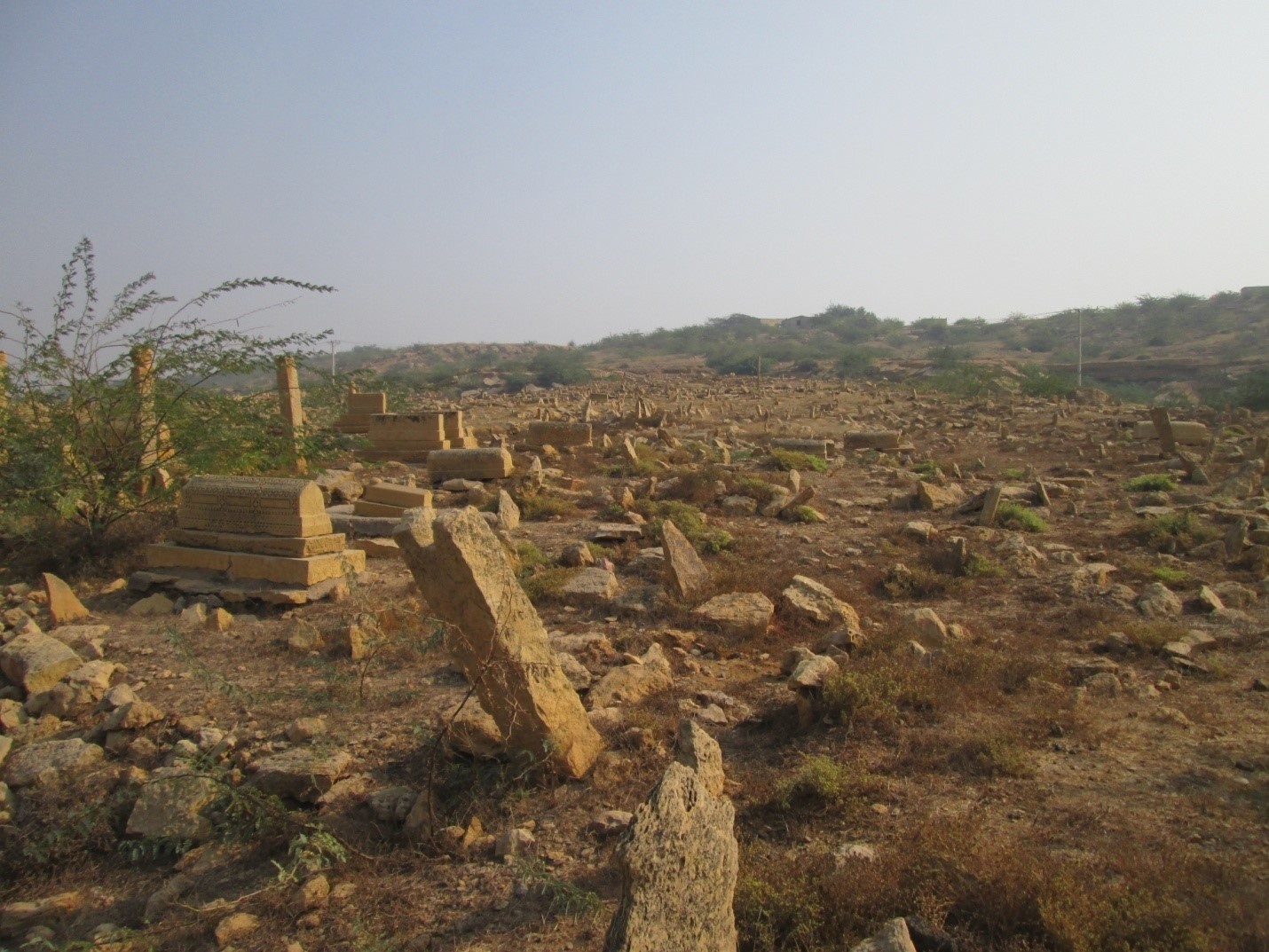
According to the Antiquity and Cultural Department’s web portal, “Sonda village was held in high regard by Muslims as a noble family of saints, known as Makhdums, lived there. Makhdum Ramzan Vedani, Mullah Ari, Mullah Bayazid and Mullah Abu Bakar are known for their pious lives. The graves of these saintly personalities situated in the graveyard were very often visited by the common people. But not many of these graves have survived the cruel hands of time. Whatever little is left of the decorations both in geometrical patterns as well as in human representation in the shape of carving on yellowish stone is however remarkable. Human representations on these graves are one of the unique features of the tombs. The Sonda graveyard is spread over the Area: 52.38 acres.”
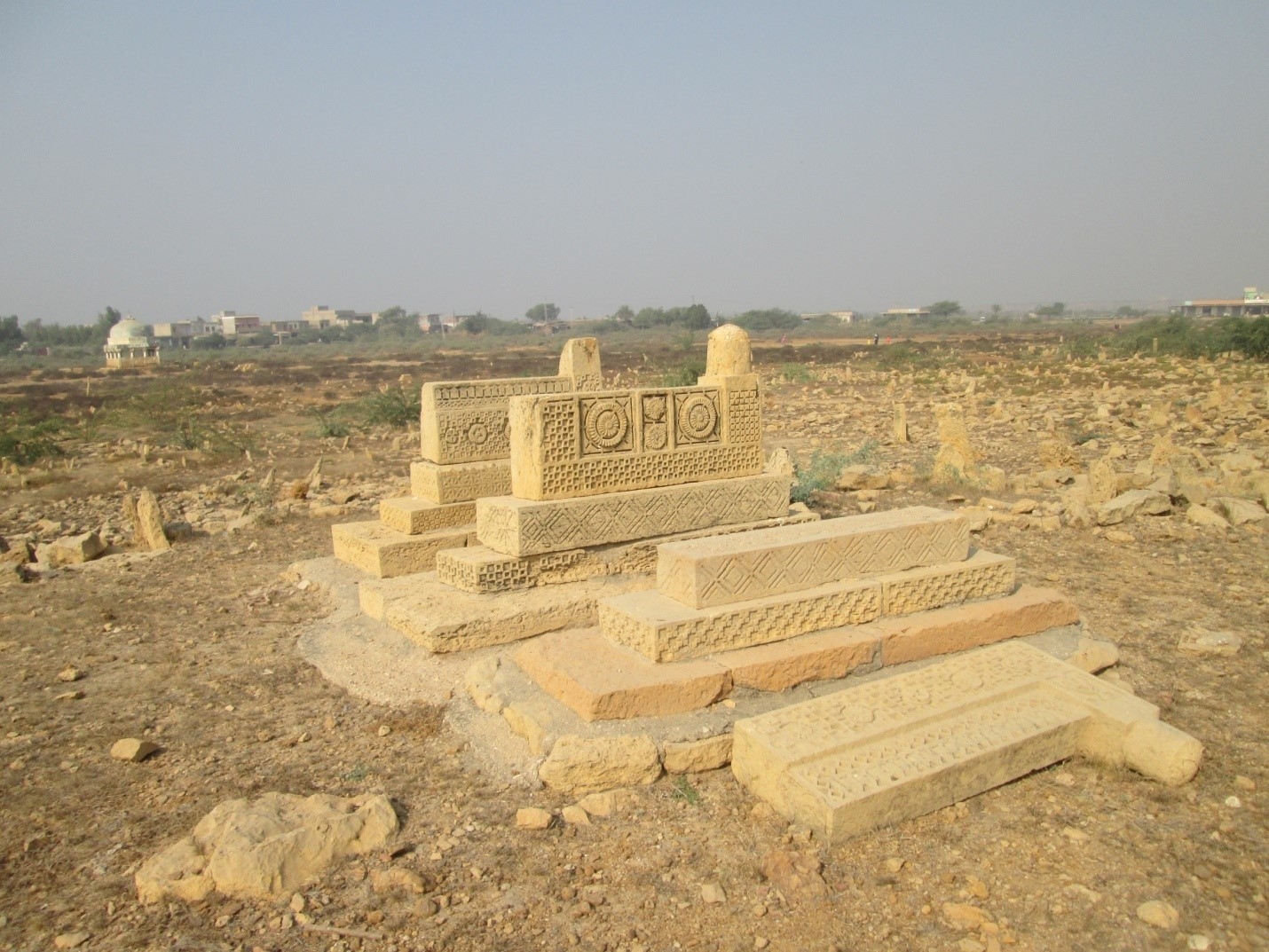
In an article published in English daily Dawn in 2019 it is stated that “People would come to the graveyard to visit their graves but, over the time, the graves have deteriorated and there is not much left of the carving and geometrical patterns.” And the same situation continues even today.
Just like the Chowkandi, Pir Lutfullah, Palejani and Makli graveyards, the spectacular graves in Sonda are made of yellow stone that was probably extracted from the nearby mountains. However, at present the graves are in a poor condition.
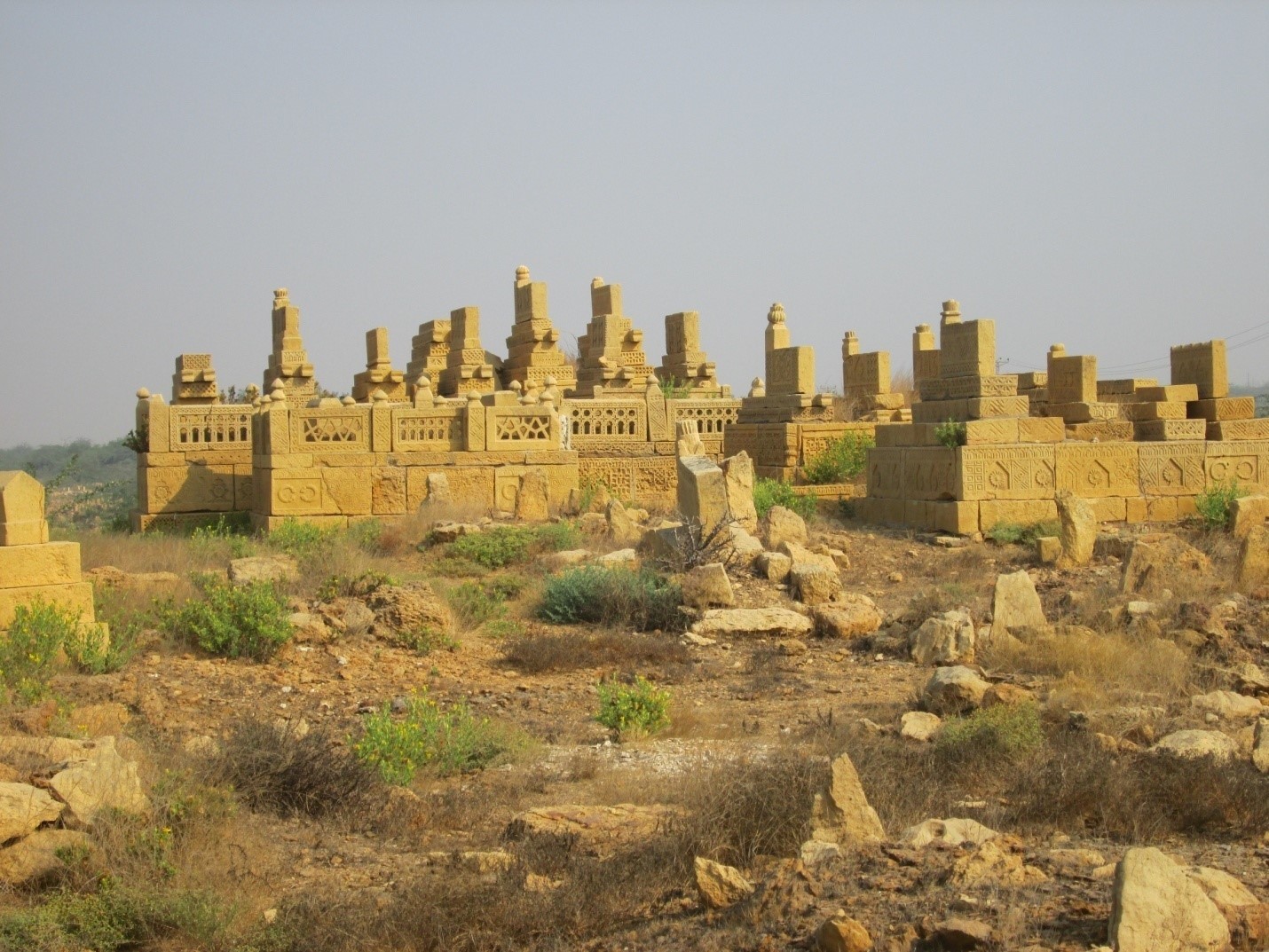
In the same article it’s written that the human representations of horse riding soldiers, warriors and archers on these graves are one of the unique features. Snakes and swords carved on the graves also indicate that the graves are of warriors and soldiers. Some also represent their rank. Six to seven feet long vertical slabs placed on some graves, depicting a warrior on a horse brandishing a sword, portray a tribute to the warrior and his martyrdom.
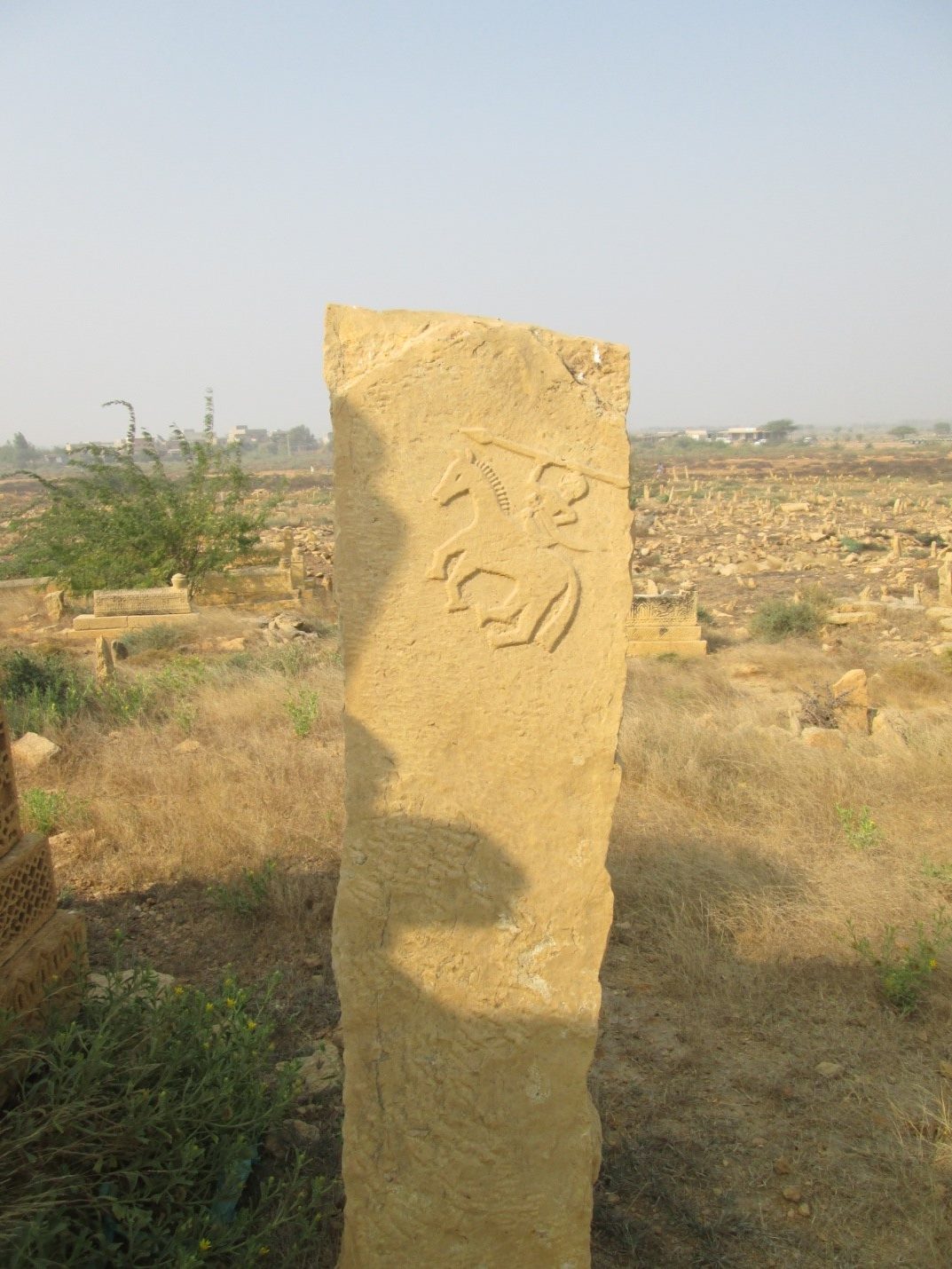
According to the Archaeological Survey of India, 1919, the graves are constructed either as a single grave or as a group of up to four to five graves that are raised on a common platform. A few graves bear some symbols portraying the work or profession of the dead person.
The graves of women and children are distinctly carved with depictions of jewelry such as bangles, necklaces, earrings and anklets. In The Antiquities of Sindh: With Historical Outline, Henry Cousens writes that the graves of women are distinct, enormously wonderful and beautifully carved. Every grave is different from the other in the context of image. There are intricate designs on small graves, flaunting the workers’ skill.
Researchers agree that this architecture came to the subcontinent during the Samma era and there was a great impact of Gujarat construction on this architecture. Most of the buildings in Makli and Thatta are from this era.
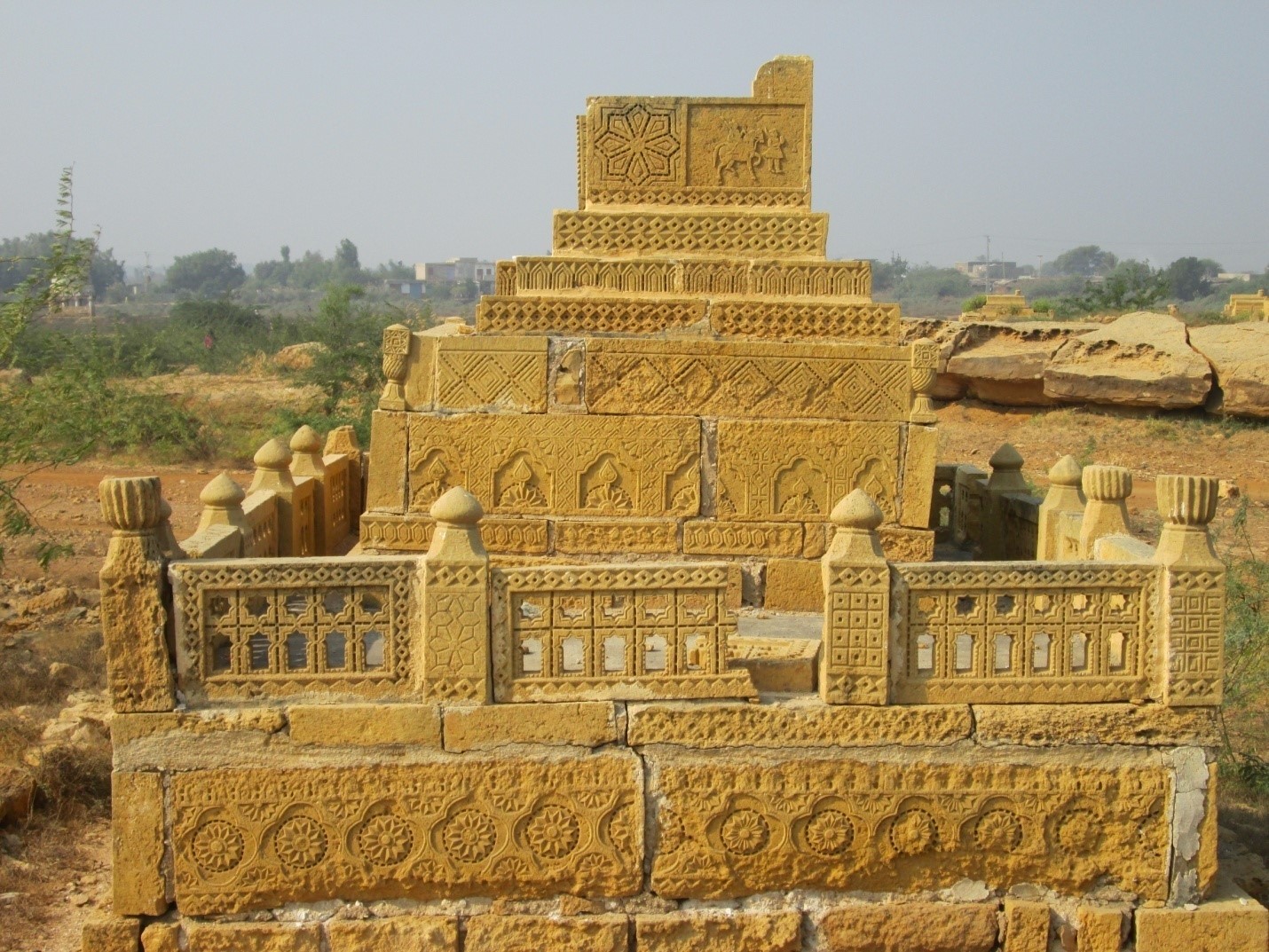
In the seventh century, the practice of making artwork on the graves spread rapidly. Pictures of horse riders, etc. began to be carved on rocks. The Samma chief or sardar may have brought this art from Gujarat in India and the Arghun dynasty, Tarkhan and Baloch chiefs developed the art, but at the end of the 18th century, because of various reasons, the art began to decline.
“There is no doubt that this is an ancient graveyard of the Samma era, when artwork was at its finest,” says Prof. Mohammad Ali Manjhi, from the Dr. N.A. Baloch Institute of Heritage Research. “There are graves of men and women who were martyred in wars, graves of chiefs as well as graves of ordinary people. However, the graveyard does not only have grave of a single tribe but people from many tribes are buried here.”
He further adds, “According to Henry Cousens, it can be said that most of the graves in the Sonda graveyard can be of the same tribe. Possibly, the Lashari tribe fought a battle with some other tribe and the soldiers who were killed were buried here. However, no final opinion can be established because it’s a centuries-old graveyard.”
When I visited graveyard I found many graves having above mentioned depictions on graves in bad condition along with long erected megalithic placed in a circle shape which is also an indication of a grave and perhaps a surprising fact from this graveyard to be deciphered. The Department of Antiquity has not yet rehabilitated the graves at the Sonda graveyard, to protect the historical site. The graveyard needs a boundary wall, and a small museum should be established, providing information about the graveyard to visitors.
__________________
Quratulain Kareem is Teaching Assistant at Department of Anthropology & Archaeology, University of Sindh. (Photo Courtesy: Author)